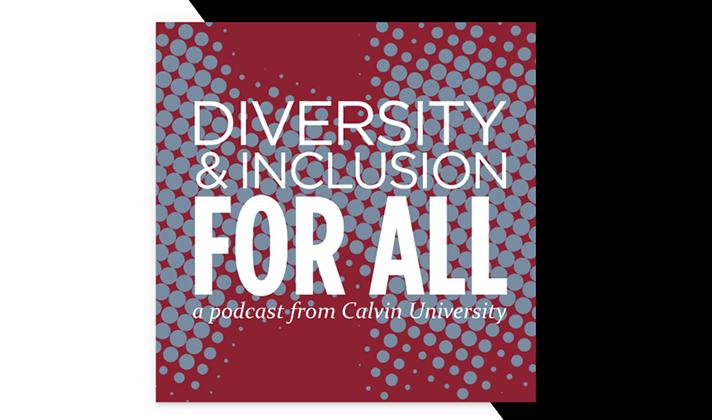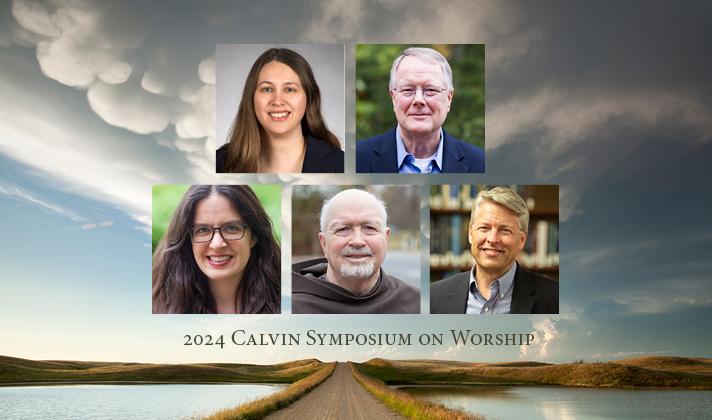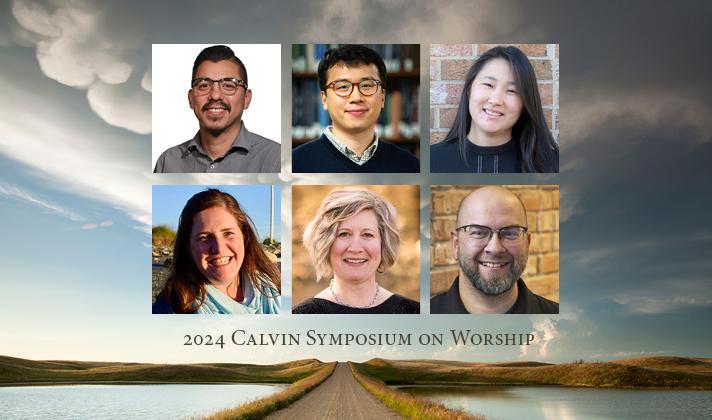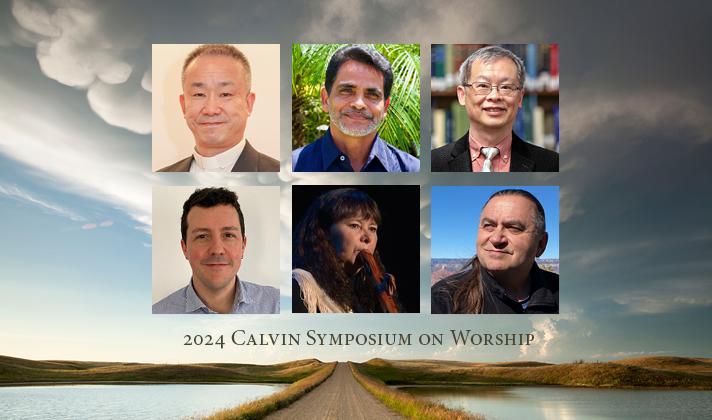John Witvliet [00:00:06] Well, Mark Charles, it is always good to be in conversation with you. We are so grateful for many years of learning together, and I'm looking very much forward to this conversation.
Mark Charles [00:00:17] Thank you, John. It's an honor to be with you again. I want to start—I do this every time I speak, even when I'm virtual—I want to just, first of all, introduce myself, so, Yá’át’ééh. Mark Charles yinishyé. Tsin bikee dine’é nishłí. Dóó tó’aheedlíinii bá shíshchíín. Tsin bikee’ dine’é dashicheii. Dóó tódích’íi’nii dashinálí. In our Navajo culture we always introduce our four clans. You know this well; you've heard me give that introduction frequently. But I like to do it for people who have not met me before. So we are matrilineal as Navajo people and our identity comes from our mother's mother. My mother's mother is American of Dutch heritage and that's why I say “Tsin bikee dine’.” Loosely translated, that means I'm from “the wooden shoe people.” My second clan, my father's mother, is tó’aheedlíinii which is “the waters that flow together.” My third clan, my mother's father, is also Tsin bikee dine’, and then my fourth clan, my father's father, is tódích’íi’nii, and that's the “bitter water” clan. It's one of the original clans for Navajo people. I also want to acknowledge I'm speaking to you today from what's now called Washington, DC. But these are the traditional lands of the Piscataway, and I want to honor the Piscataway as the host of the lands where I’m living. I want to thank the Piscataway for their stewardship of these lands. And I just want to say how humbled I am to be living on these lands today. And John, I'm very excited about this conversation and having a discussion about these topics. I've been pondering this for the past week or so. And so I'm very much, as I always do, looking forward to the dialogue that you and I are going to have over the next few minutes here.
John Witvliet [00:01:55] Thanks so much, Mark. One of the things that I value a great deal is the learning that is continual and the reflection that is ongoing and the opportunity to be in conversation with you over many months and years. And today we have the opportunity to take into the center of our discussion the text of this remarkable prayer that Jesus invited us to pray. And one of my definitions of Christian life would go something like this: learning to pray the Lord's Prayer and then learning to mean it and understand it a little bit more every day, every week, every year for the rest of our life. It's a text that's always out ahead of us. We're always growing into it. And so today we have a wonderful opportunity to reflect on that. So I'd like to just invite us to walk section by section, petition by petition through the prayer with questions that I asked you to reflect on, what you've been learning in light of your continuing work and reflection. And so I'd love for us to start with the opening: “Our Father, who art in heaven, hallowed be thy name.” What is that opening part of the prayer meaning to you, and what growth and understanding are you bringing to that over time?
Mark Charles [00:03:22] Thank you. You know, whenever I feel . . . well, I pray through this prayer frequently. I find it is a good way to refocus me on who God is and on what's important, as well as on what does it mean to understand God within my own context. For decades now I've been on this journey to understand what does it mean to be Native and to be Christian? What does it mean to follow Jesus, follow and worship God as a Navajo man with all the history and understanding that come along with my Navajo people and our Navajo language and our traditions and everything else? And so this prayer is an interesting one, because some of it I would say comes from my Navajo tradition and what I've done specifically as our Navajo culture. Other parts come of it from just living among my Navajo people.
The start of the prayer, “Our Father, who art in heaven, hallowed be thy name,” it seems like Jesus reminding himself who he's talking to. And for me, one of the most profound connections I have with God is when I watch the sunrise. And over the years, both living on the reservation for eleven years and now living in DC for seven years, I've worked very hard to have a discipline of watching the sunrise. And as I've shared before, you know, when you watch the sunrise once or watch a couple of times a year, it's always beautiful. But when you watch it day after day, week after week, month after month, and year after year, it does something very profound in your heart. And the thing it does most powerfully is it reminds me I’m not in control. I am living in this creation. I am here to steward this creation. I cannot ad I'm not supposed to control it. You know, the sun rises whether you're there or not, whether there’s clouds or no clouds or whether you're awake or you're asleep, or whether you're busy at work or whether you're sitting by a river watching it come up, the sun rises. And if we take time to watch it, we are blessed by that. And so it's like every day there's this gift from Creator that's happening, this incredibly beautiful gift that's happening. And when we take time to sit there and enjoy it, it is unbelievably life-giving. And the fact that we can't control it, we can't make it come quicker, we can't make it come later, we can't make it adjust to our schedule, we can't change the seasons that go along with the sunrise. It's this constant reminder that Creator is the one in control of these things. We're here to steward it. We're here to enjoy it. We're even here to soak in the beauty of it. But we're not here to control it.
And then the second side of that—I'll just add this one little piece, because this starts off with giving thanks—especially when we lived on the Navajo Nation and we were living in this remote hogan six miles off the paved road . . . on a dirt road, and we were living in a one-room hogan: log walls, dirt floor. We had an unstable income coming in. We oftentimes were literally in a place of incredible simplicity. And my wife and I, we started a tradition in our family that exists to this day, which is, we began at mealtime going around the circle—at that point it was three of us, my wife, myself, and my son—and each of us just listing one thing that we were thankful for. Sometimes it was literally for a can of beans or for an unexpected $5 bill we found stuffed underneath the car seat that we could use for gas that day. You know, something very simple. And just [being] able to find a place to be grateful and express gratitude in the midst of that.
And so those are the two things, when I think about the beginning of this prayer, when Jesus says, “Our Father, who art in heaven, hallowed be thy name,” I go back to just reminding myself I know God first and foremost as Creator. Whenever I feel lost in my relationship with God, whenever I feel like I don't know where I'm at or where God is, or how I'm connecting to the creator of the universe, I always go back to my relationship with God as Creator and to seeing God in creation. And then I go back to giving thanks for even the most simple things. And I find when I do those two things consistently, it puts me in my place. It reminds me I'm not in control. It gives me a peace that is not swayed by the ups or the downs, the highs or the lows of any given day, but it's something that's much more constant, much more consistent, and even much deeper because it's not based on yesterday it’s steak and today I'm eating baloney, right? It's a much more simple understanding of gratitude and a very humbling understanding of my own place in this world.
John Witvliet [00:09:07] Mark, that's powerful. One of the things as I hear you, I think about what a powerful combination of practices you've described. So watching the sunrise, there would be people who would wake up and see the very same thing you do, but not perceive the very same thing you do because you have the lens to see that as Creator’s gift. And there would be people who would pray this opening petition of the Lord's Prayer but wouldn't have the practice of watching the sunrise and over time might actually bring to it a sort of “I'm in control” spirituality that actually that prayer wouldn't break through. But there's something about the combination of those practices, about having the prayer and about having the practice of the daily reception of the sunrise. Say a little bit about that combination, about how they work together.
Mark Charles [00:10:05] For me . . . the thing that created the deepest impact on my life is when I would—I began this back on the reservation, and it didn't happen immediately. It didn't happen after watching the sunrise once or twice or even after a month or two. It literally happened after years of not only watching the sunrise, but watching as I got up every morning and watched the sunrise and watched the seasons change and watched the birds migrate and the flowers grow and all of these things happening around me, and then watching it happen year after year, season after season. And for me it was reflecting back on that, years or even over a decade after doing that, of realizing that discipline of doing that every morning—and not just sitting there watching the sunrise but being in a posture of prayer while I was watching the sunrise. And that's the Navajo tradition, right? You would wake up in the morning, you would run or walk toward the east, and then you would greet the morning sunrise with your prayers. And so as I began, as I did that, not just to sit and reflect on the beauty of the sunrise, but to actually be in a posture of prayer as I was doing this, and as the seasons were changing and all of the things that were happening around that, that was the thing. It was those two things, doing them over a long period of time, that spoke most deeply to my heart.
John Witvliet [00:11:46] Powerful.
Mark Charles [00:11:47] And it was after living here for several years when I was feeling, after my campaign for president in 2020 ended, and I wasn't . . . sure where God was anymore. I'd done this incredibly risky and bold thing, had tried to move the conversation at a national level, and had not received the response I wanted. And I decided one of the reasons I was feeling so out of sorts was because after moving to DC, it was hard to find a place to watch the sunrise, and I lost that daily discipline. I would still get up once or twice a month to see it at an early flight or something else. But I wasn't doing it as a spiritual discipline. And so I literally forced myself. I drove around the city looking for a place to watch the sunrise consistently.
And then the other thing I did, and this is also very intentional, I was trying to initiate this national dialogue about our challenges we face as a nation and as a church, and to get people to look at some very hard things. And I recognize that as I was doing those things myself, living on the reservation, I was also watching the sunrise every day, and I was expecting, even hoping, anticipating that our nation would be able to engage in this conversation. But again, they weren't watching the sunrise. And so what I started doing when I began watching the sunrise here in DC, almost as a way of national discipleship, if you will, is I began to livestream the sunrises. And I would jump online on my cell phone, on my smartphone, maybe two minutes before the sun came up. I would greet whoever else was joining me online. And then I would sit in silence for a minute, a minute and a half, two minutes, while the sun rose. And then after the sun was up, I was I say a short prayer: a prayer of gratitude and a prayer of petition of things at a global level. And then I would say goodbye to people and wish them or challenge them to walk in beauty throughout that day. And I would end it. Those videos are five to seven minutes long at the longest, and I usually only have maybe ten to fifteen people who join me for that sunrise. But as I began traveling around the country, especially this summer as I drove across the country and met with thousands of people. I was amazed at the number of people who stopped me who I'd never met before and said, “I love your sunrise videos. I can never join you when it happens. I'm on the West Coast” or wherever else, or “my schedule doesn't let me do it, but I always watch it later in the day. And it's so powerful to be able to just watch that beauty and be reminded of that.”
And so, again, this is my goal. I am trying to initiate this national dialogue about the things going on, the Doctrine of Discovery, the things we've done as a nation, the things we've done as a church. And I realized that if I really wanted to get the public, the nation to engage in that dialogue, I didn't just have to find a way to initiate the conversation. I also had to disciple people in the spiritual discipline that personally allowed me to join the conversation. And so that's one of the things I do every time I watch the sunrise, I always livestream the sunrise every time I watch it, because I want at least there to be the option for the public to engage in that discipline. And I'm very hopeful just by the feedback I've been getting over the past few years.
John Witvliet [00:16:03] Powerful. And Mark, it strikes me as really a remarkable combination of how technology and appreciation of the gift of nature can actually work together. And it's a way to use technology to bring us back and remind us, and I think about how wonderful it will be for people who do experience it on livestream to themselves develop habits like the ones you've described and then building it into their lives on an ongoing basis. So thank you.






